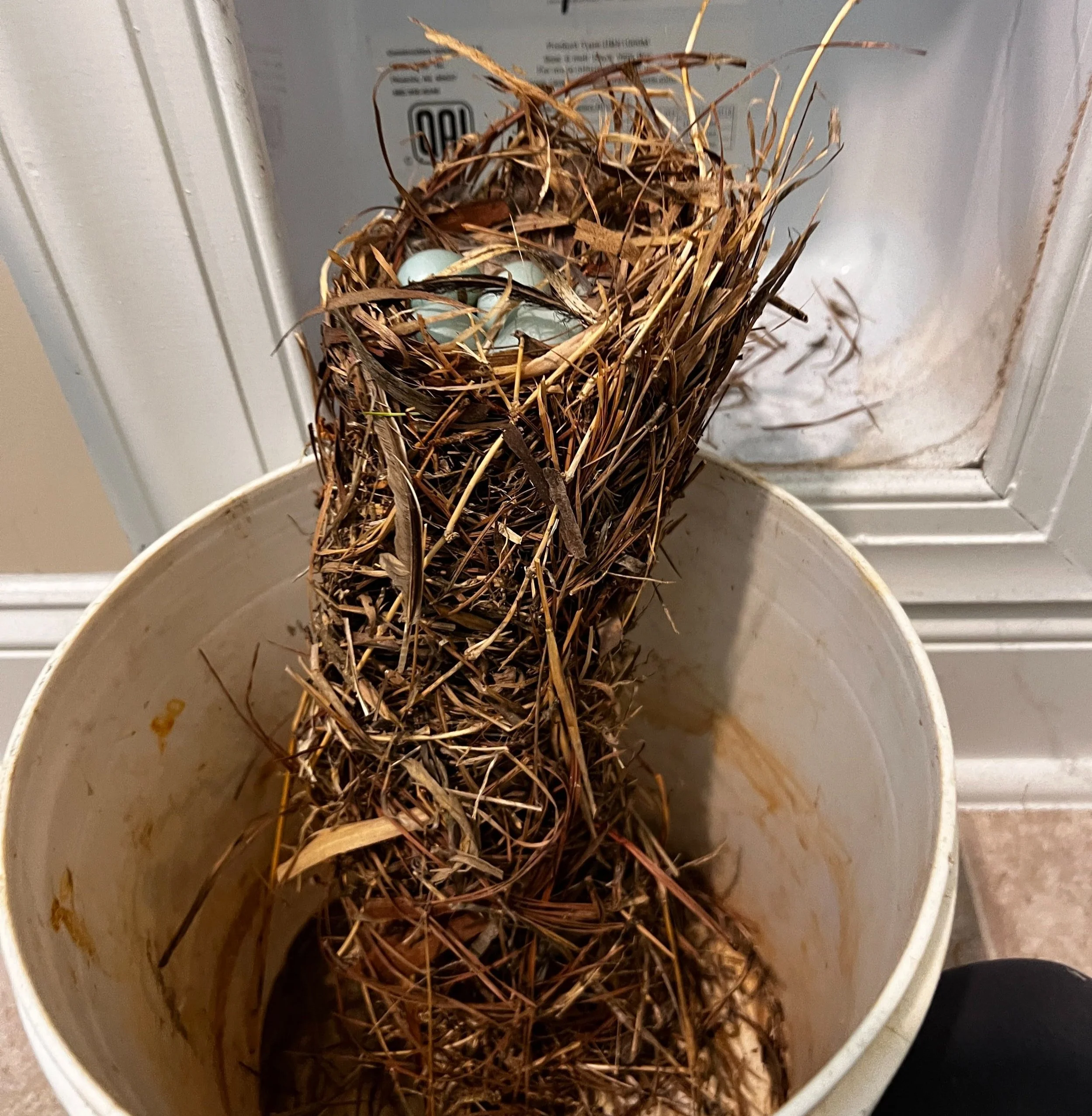There’s a bird living in my vent… should I be worried?
Spring and early summer bring beautiful birdsong and warmer weather—but they can also bring unwanted visitors into your home in places you might not expect. One of the most common yet overlooked issues homeowners face during nesting season is birds entering exhaust vents. While it may seem harmless at first, birds nesting in bathroom, dryer, or kitchen exhaust vents can pose serious risks to your home and health.
In this post, we’ll explore why birds are drawn to exhaust vents, the dangers they pose, and how professional wildlife removal can help prevent costly damage.
Why Birds Nest in Exhaust Vents
Exhaust vents provide an ideal nesting location for many small birds, especially starlings and house sparrows. These vents offer warmth, shelter from predators, and a perfect place to raise young. The vent flaps are often weak or broken, making it easy for birds to push their way in and begin building nests within the ductwork.
While this behavior is natural for birds, it’s far from safe for your home.
Fire Hazards
One of the most serious concerns with birds in exhaust vents—especially dryer vents—is the risk of fire.
Birds build nests with dry, flammable materials like twigs, grass, feathers, and leaves. When these materials clog dryer vents, they restrict airflow and can cause the dryer to overheat. According to the U.S. Fire Administration, thousands of house fires are caused by dryer vents each year, and many of these are due to blockages—including those caused by bird nests.
In addition to dryer vents, kitchen exhaust vents can also become fire hazards when obstructed. Grease and heat from the stove can ignite nesting materials, especially if the bird has accessed the range hood vent.
Health Hazards and Bird Mites
Birds bring more than just noise—they can also bring disease.
Bird droppings inside vents and ductwork can harbor dangerous pathogens like histoplasmosis, cryptococcosis, and salmonella. When vents are turned on, spores and particles from dried droppings can circulate through your home, potentially leading to respiratory problems, especially for those with allergies or weakened immune systems.
Another common health concern is bird mites. These microscopic parasites feed on the blood of birds and can easily spread into your home when a nest is built inside a vent. Once the baby birds leave the nest, mites often wander into the home in search of a new host—sometimes biting humans and pets. While they don’t live long on human hosts, their bites can cause itching, irritation, and even allergic reactions.
Damage to Ductwork and Home Systems
Birds inside your vents can do significant damage, often out of sight until the problem becomes severe.
Their nesting materials can clog ducts, break vent flaps, and even cause fans or motors in bathroom and kitchen exhaust systems to burn out. Moisture from bird droppings can lead to corrosion or mold inside the ducts, which can be costly to clean or replace.
In addition, their presence can reduce the efficiency of your ventilation systems. Blocked airflow causes fans and appliances to work harder, increasing your utility bills and shortening the lifespan of the equipment.
How to Know If You Have Birds in Your Vents
Common signs that birds have taken up residence in your exhaust vents include:
Chirping or scratching sounds coming from walls or ceilings
A musty or unusual smell near vents
Visible nesting material sticking out of the vent
Flies, bird mites, or insects appearing inside your home
Poor ventilation from affected rooms (e.g., bathroom fans or dryers not working efficiently)
What You Should Do
If you suspect birds are nesting in your vents, do not attempt to remove them yourself. Bird removal should be handled by a licensed wildlife control professional. Not only are certain birds protected by law (such as migratory species), but improper removal can result in injury, spread of mites or bacteria, and further damage to your home.
A professional wildlife technician will:
Inspect and confirm the presence of birds or nests
Remove birds and nesting materials
Sanitize and deodorize the affected areas
Install pest-proof vent covers to prevent future entry
Prevention Is Key
The best way to avoid the hazards of birds in exhaust vents is prevention. Quality vent covers with fine mesh or bird guards can effectively block entry while allowing proper airflow. Annual inspections, especially in spring, can help identify vulnerable areas before birds have the opportunity to move in.
Final Thoughts
While birds in your backyard may be a welcome sight, birds in your exhaust vents are another matter entirely. They pose real risks to your safety, health, and home systems. If you suspect birds are nesting in your vents, don’t wait—contact a professional wildlife control service for a thorough inspection and safe removal.
Protect your home before a small problem becomes a big—and expensive—one.
If you're dealing with unwanted birds in your vents or want to prevent them altogether, Piedmont Wildlife Control is here to help. Contact us today for a consultation and let us safeguard your home from the hidden dangers of nesting birds.


